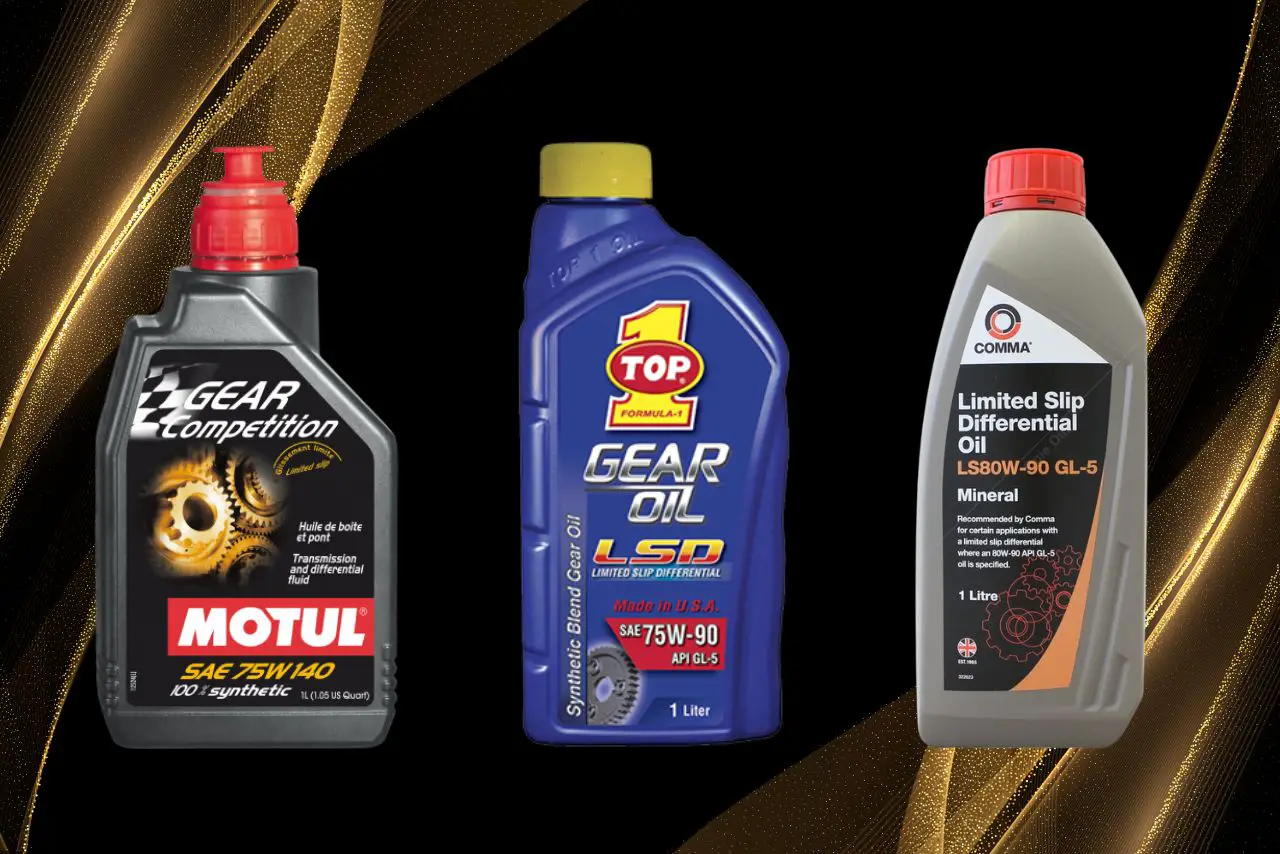Have you ever been confused about the differences between power steering fluid and transmission fluid? It’s important to know that these two fluids are not interchangeable, as they have very different functions.
Understanding the purpose of each type of fluid can help protect your car from damage caused by using the wrong kind.
Dive into this article to learn more about these essential automotive liquids! Is power steering fluid the same as transmission fluid?
Power steering fluid and transmission fluid are not the same. Power steering fluid is a type of hydraulic oil that serves to lubricate, cool, and clean the power steering system. Transmission fluids, on the other hand, are specifically designed for use in manual or automatic transmissions to reduce wear and maintain proper shifting.
They also have different chemical makeup, while power steering fluid is made up mostly of mineral oil base stocks with a few additives depending on its application, transmission fluids typically contain detergents and friction modifiers with synthetic or semi-synthetic base oils.
Table of contents
Is Power Steering Fluid the Same as Transmission Fluid?
No, power steering fluid and transmission fluid are not the same. Power steering fluid is a hydraulic fluid that helps the power steering system operate smoothly. Transmission fluid is a lubricant that helps the transmission gears move smoothly.
Power steering fluid is typically pink or red, while transmission fluid is typically red or brown. Power steering fluid also has a lower viscosity than transmission fluid.
It is not recommended to use transmission fluid in a power steering system, as it can damage the seals and hoses. If you need to add fluid to your power steering system, it is important to use the correct type of fluid.
Here is a table that summarizes the differences between power steering fluid and transmission fluid:
| Feature | Power Steering Fluid | Transmission Fluid |
|---|---|---|
| Color | Pink or red | Red or brown |
| Viscosity | Lower | Higher |
| Purpose | Lubricates the power steering system | Lubricates the transmission gears |
| Use in power steering system | Yes | No |
If you are unsure what type of fluid to use in your power steering system, consult your vehicle’s owner’s manual.
Difference Between the Two Fluids:
Power steering fluid and transmission fluid are two distinct fluids that serve different purposes.
Power steering fluid is a hydraulic liquid specifically designed to help the power-assisted steering system in a vehicle work correctly. It helps reduce friction, which ensures optimal turning performance without too much effort from the driver.
This type of fluid has lubricating properties and contains anti-wear additives to provide added protection for your car’s components.
Transmission fluid, on the other hand, is used to cool and lubricate parts within an automatic transmission system such as gearsets or bearings. It also helps maintain pressure between multiple moving parts in order to keep them operating properly and prevents excessive wear during gear shifting operations.
While it does contain some lubricating elements similar to those found in power steering fluid, its primary purpose is not for lubrication but rather cooling and pressure maintenance within the transmission system.
The two types of fluids can’t be interchangeably due to their differing chemical compositions, using one type instead of another could damage specific components of your vehicle’s systems over time if done consistently enough over extended periods of time
What is in Power Steering Fluid?
Power steering fluid is an integral part of a vehicle’s power steering system. It helps to keep the system lubricated and functioning correctly, while also helping protect against wear and tear.
Power steering fluid is designed to be thin enough to flow through complex hydraulic systems associated with power steering systems, yet thick enough not to evaporate quickly like other automotive fluids.
The main ingredients in power steering fluid are mineral oil or synthetic base stocks mixed with special additives that help reduce friction and allow for smooth operation of the components in your car’s power steering system.
Depending on the specific application, some manufacturers may add additional ingredients such as anti-foaming agents or detergents that can provide superior performance over time by keeping contaminants from collecting inside the system and preventing sludge build up due to heat exposure.
It is important for proper maintenance of a vehicle’s power steering system that you use only high quality approved products specifically designated as being compatible with your model.
Never substitute transmission fluid for this purpose as there are significant differences between both types of fluids which could result in damage to your car’s engine if used incorrectly.
What is in Transmission Fluid?
Transmission fluid is a special lubricant that helps keep your vehicle’s transmission in top condition.
It works to reduce friction between the moving components of the transmission, while also helping to cool and clean it.
Additionally, it acts as a hydraulic medium for controlling pressure within the transmission system.
The exact composition of transmission fluid varies depending on the type and age of your vehicle, but generally speaking, you can expect it to contain detergents and anti-foam agents for cleaning; anticorrosion and oxidation inhibitors.
It can also be used as rust preventatives; metal deactivators; viscosity index improvers; extreme pressure additives for aiding synchronizer action in manual transmissions and seal swellers or conditioners which help create leak-proof seals between parts.
It’s important not to use power steering fluid interchangeably with transmission fluid because they serve different functions within different systems of vehicles.
Power steering fluids are designed specifically for high heat dissipation within power steering mechanisms while Transmission fluids are formulated to provide superior protection against wear, corrosion, foaming and stability at both hot and cold temperatures.
Can You Interchange the Fluids?
No, you cannot interchange power steering fluid with transmission fluid. While they are both liquids used in vehicle systems, the two fluids have different properties and serve distinct purposes.
Power steering fluid is a hydraulic oil that helps assist turning the wheel. It is designed to lubricate and protect parts like seals, o-rings and valves which reduces friction in the system. This allows for easier movement when you turn your car’s steering wheel.
On the other hand, transmission fluid serves as a coolant and lubricant for automatic transmissions found in some cars today.
It ensures proper function of gears by providing smooth gear shifts as well as cooling internal components of an engine to prevent overheating or burning out of parts such as clutches and bearings.
The added protection also prevents wear on moving components like bands or linkages while still allowing them to move freely within their range of motion without causing any extra strain on other parts around them.
For these reasons it is important not to confuse power steering fluid with transmission fluid, mixing up one or the other could be disastrous for your car’s performance and lifespan!
Benefits of Using Right Type of Fluid
Using the right type of fluid is essential for vehicle maintenance. It’s necessary to use a power steering fluid specifically designed for your car’s make and model in order to ensure proper lubrication and optimal performance of its components.
Power steering fluids contain special additives that help prevent foaming, corrosion, oxidation, and sludge buildup inside the system. These additives also protect against wear on metal parts so they last longer.
Without the right type of fluid, it can lead to premature failure or damage from heat build-up or contamination caused by dirt particles or air bubbles.
Furthermore, using an incompatible power steering fluid may result in decreased fuel economy as well as abnormal sounds coming from the system due to incorrect viscosity levels which cause improper operation of moving components like pumps and valves.
This could potentially put unnecessary strain on engine components leading to costly repairs down the line if not addressed immediately.
How to Know When to Change Your Vehicle’s Fluids?
One of the most important maintenance tasks to keep your vehicle running properly is making sure that the fluids are changed regularly.
Knowing when to change your vehicle’s fluids can be tricky, however. Here are some tips for determining when a change is necessary:
Check Your Owner’s Manual: Every car has its own specific manufacturer recommendations on how often their engine oil and other fluids should be changed.
The owner’s manual will provide you with these guidelines so make sure to check it before doing any fluid changes.
Monitor Your Mileage: Most manufacturers recommend changing the engine oil every 3,000-5,000 miles or 6 months (whichever comes first).
If you drive more than this mileage in a shorter interval then it’s best to get an oil change sooner rather than later.
Other maintenance intervals vary depending on what type of fluid needs to be changed for example brake fluid usually only needs to be replaced once every two years or 24,000 miles.
Check For Leaks Or Contamination: Make sure there aren’t any visible signs of leaking or contamination in any of the fluid reservoirs under your hood if you do notice anything suspicious then have a qualified mechanic take a look at it right away.
What Happens if I Put Transmission Fluid in My Power Steering?
Using transmission fluid instead of power steering fluid is a dangerous mistake that can cause irreparable damage to your car.
Transmission fluid and power steering fluid are not interchangeable; they have different properties and serve distinct purposes.
When you put transmission fluid in the power steering system, it will likely leak out because it has a lower viscosity than power steering fluids which means it’s less resistant to flow.
This could make the vehicle pull hard while turning or be difficult to steer altogether. In addition, using the wrong type of oil can ruin seals within the system leading to costly repairs or replacement parts such as pumps and hoses.
It’s also important to note that if there is an issue with your car hydraulic components like brakes, clutch etc., then do NOT use transmission fluid at all as this may lead to further complications down the track.
Make sure you always check what kind of oil is needed for your car before attempting any maintenance job yourself, especially those related to hydraulics systems like brakes and suspension components.
What Can I Use Instead of Power Steering Fluid?
When it comes to motor vehicle fluids, the terms “power steering fluid” and “transmission fluid” are often used interchangeably, however, they are two distinct types of lubricants with specific roles in a car’s operation.
Automatic transmission fluid (ATF) is intended for use in automatic transmissions, allowing vehicles to shift gears smoothly and reliably over time.
Given that these two types of fluids have distinctive purposes, substituting one type for another can cause serious damage to a vehicle’s components.
While ATF may be able to substitute as a temporary fix when power steering fluid runs out unexpectedly, it should not be used as an ongoing replacement product due to its inadequate properties and lack of compatibility with some parts within the power steering system.
Similarly, using power steering fluid instead of ATF can result in clogged filters or poor shifting performance due to its inferior viscosity profile compared with ATF’s higher levels required by modern transmission systems.
Is It Ok to Use Brake Fluid for Power Steering?
No, it is not OK to use brake fluid for power steering. Brake fluid has a much lower viscosity than power steering fluid and cannot withstand the high temperatures generated in the hydraulic systems used by most modern vehicles.
Additionally, as brake fluid absorbs moisture over time, its lubrication capabilities deteriorate quickly when exposed to air. This can cause expensive damage to vital power steering components such as pumps and hoses.
The two fluids also have different purposes; while transmission fluid is designed specifically to help lubricate gears and ensure smooth operation of your car’s transmission system, power steering fluid helps maintain control of vehicle direction via its hydraulic systems.
As such, it needs specific properties that make it suitable for this purpose, something brake fluid does not possess.
Therefore, if you need to top up or replace your cars ‘power steering reservoir with new liquid then you should always use dedicated power-steering-specific liquids only, never substitute any other form of automotive liquid.
Watch Video: Is Power Steering Fluid the Same as Transmission Fluid?
Conclusion and Final Thoughts 💭
Power steering fluid and transmission fluid are not the same. While they may have similar properties and functions, they serve different purposes in a vehicle.
Power steering fluid is specifically designed to lubricate and protect the power steering system, while transmission fluid is formulated to operate the complex components of the transmission.
Using the wrong fluid in either system can lead to damage and costly repairs. It is essential for car owners to understand the distinctions between these fluids and ensure that they use the correct one for each system.
By doing so, they can prolong the lifespan of their vehicles and avoid unnecessary expenses.
So remember, always consult your vehicle’s manual or seek professional advice when it comes to selecting and maintaining fluids for your car’s power steering and transmission systems.
FAQs
What Is Power Steering Fluid Used For?
Power steering fluid is used to assist in smooth and easy steering of a vehicle. It helps in reducing the effort required to turn the steering wheel.
What Is Transmission Fluid Used For?
Transmission fluid is used to lubricate and cool the moving parts within the transmission system.
It also helps in transferring power from the engine to the wheels.
Can I Use Power Steering Fluid in Place of Transmission Fluid?
No, you should never use power steering fluid in place of transmission fluid. They have different characteristics and using the wrong fluid can damage the transmission system.
Can I Use Transmission Fluid in My Power Steering System?
It is not recommended to use transmission fluid in a power steering system. The properties of transmission fluid are not suitable for power steering systems and can cause damage.
How Do I Know Which Fluid My Vehicle Requires?
The best way to determine the correct fluid for your vehicle is to consult the owner’s manual.
It will provide the recommended fluid specifications for both power steering and transmission systems.
What Happens if I Use the Wrong Fluid in My Power Steering or Transmission System?
Using the wrong fluid can cause damage to the system, leading to expensive repairs. It can lead to increased friction, overheating, and reduced performance.
Can Power Steering Fluid and Transmission Fluid Be Mixed?
No, power steering fluid and transmission fluid should not be mixed. Mixing them can cause fluid breakdown, loss of lubrication properties, and damage to the system.
How Often Should Power Steering Fluid and Transmission Fluid Be Changed?
The recommended interval for fluid changes varies depending on the vehicle manufacturer. It is advisable to follow the maintenance schedule provided in the owner’s manual.
Are Power Steering Fluid and Transmission Fluid the Same Color?
No, power steering fluid and transmission fluid can vary in color. Power steering fluid is often red or pink, while transmission fluid can be red, pink, or brown.





